With its cobbled streets, bohemian cafés and sweeping views over Paris, Montmartre boasts an incomparable charm that attracts millions of tourists every year.
The hilltop Parisien neighbourhood is steeped in rich artistic history, but today it is one of the many pockets of Europe facing an unprecedented number of visitors.
Many of the 27,000 residents are now at breaking point, unable to cope with their once-scenic streets being transformed into a sea of crowds thanks in part to influencers romanticising the district on TikTok and Instagram.
Last year, the imposing Sacré-Coeur – a white-domed basilica in the heart of Montmartre – was the most visited monument in France, ahead of the Eiffel Tower, with 11 million tourists.
With tourists now outnumbering residents 423 to one, Montmartre now has an even denser tourist zone per capita than Venice.
The Parisien district is the latest hotspot to face a growing wave of anti-tourism sentiment, with locals becoming increasingly frustrated by selfie-hunting holidaymakers bringing chaos to their doorsteps.
A string of anti-tourism protests have taken place across Spanish islands, while tourists themselves are even getting fed up. In Rome, where tourists have been crammed shoulder-to-shoulder this summer, one visitor said it was like being ‘part of one big sweaty herd’.
Now the peace has been shattered in Montmartre, with locals warning their home has been transformed into an ‘amusement park’.
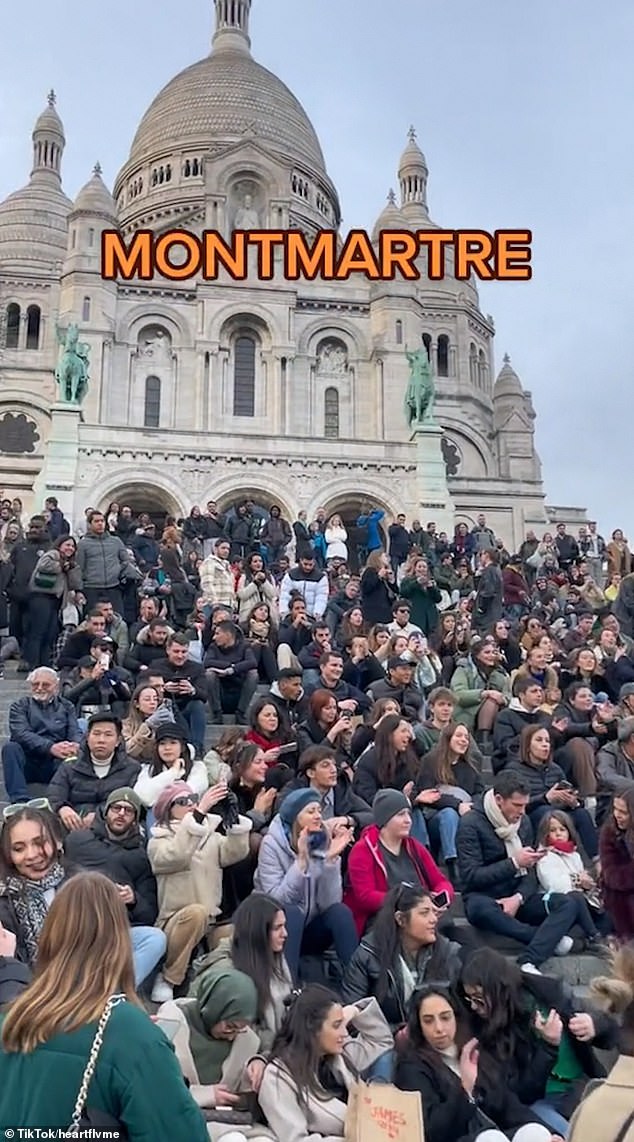
Last year, the imposing Sacré-Coeur (pictured) – a white-domed basilica in the heart of Montmartre – was the most visited monument in France
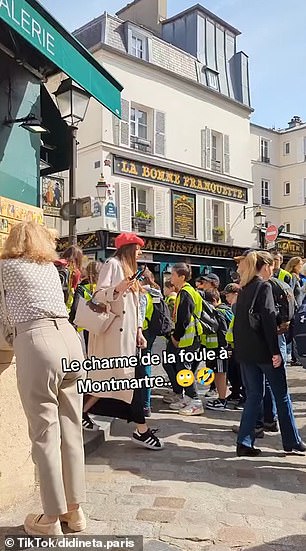

Videos posted on social media shows the cobbled streets packed with tourists in Montmartre
Michèle Barrière, who has lived around the corner from the Moulin Rouge for three decades, told The Telegraph: ‘Enough is enough.’Montmartre has become an amusement park, and we are the attractions. Soon they’ll be throwing us peanuts.
‘It’s Disneyland.’
She added: ‘It has got totally out of hand. I have nothing against tourists per se, but now my prevailing feeling is one of hostility. Sometimes I can’t even reach my front door due to these hordes.’
Another resident, Eric Durand, said the end of the Covid lockdowns coupled with Paris hosting the Olympic Games last summer has brought a huge influx of tourists.
Locals say Montmartre first became a tourist hotspot after the 2001 cult movie Amelie, with visitors flocking in their droves to film locations including the Café des Deux Moulins.
Netflix hit Emily in Paris has brought a fresh wave of tourists who love to visit La Maison Rose restaurant or the Wall of Love.
Last year, the Paris Olympics brought the road bike race to Montmartre – and today, the final stage of the Tour De France will make a detour via the chic neighbourhood for the first time ever.
Julien Ogeard, a manager of a Montmartre restaurant, told The Telegraph the area is ‘losing its soul’ and that he is considering moving out, adding: ‘I’m not the only one.’
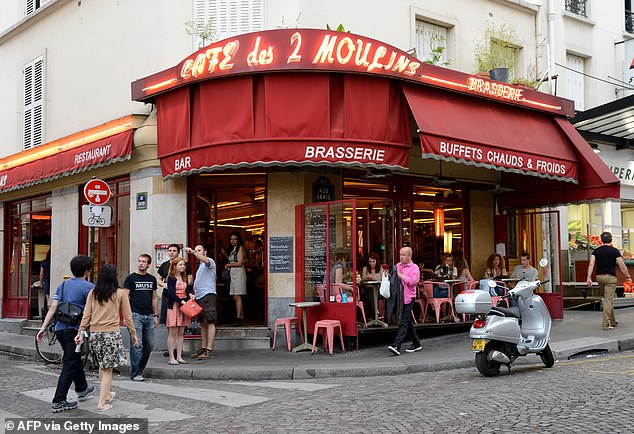
With tourists now outnumbering residents 423 to one, Montmartre now has an even denser tourist zone per capita than Venice
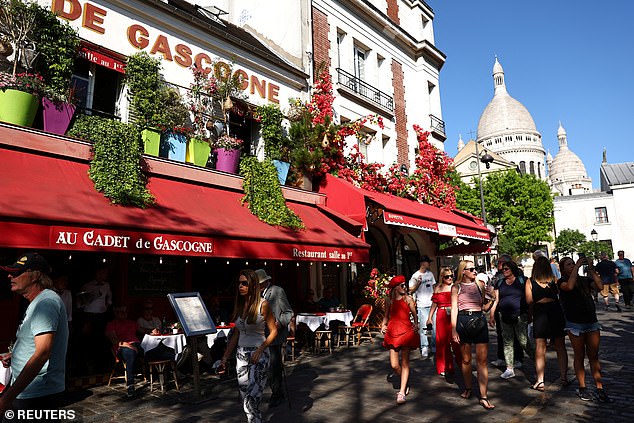
Tourists walk past the restaurant Au Cadet de Gascogne on the Place du Tertre in Montmartre
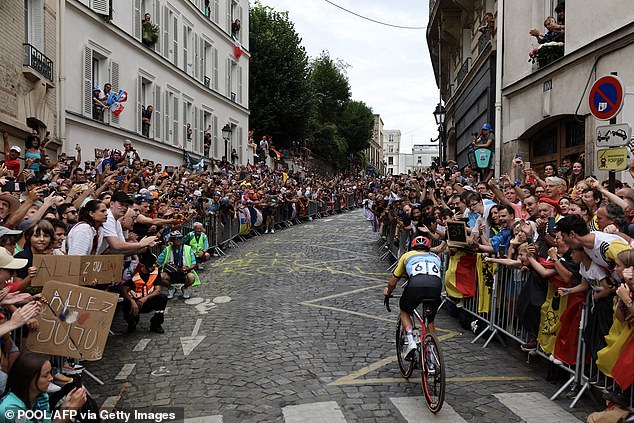
Last year, the Paris Olympics brought the road bike race to Montmartre
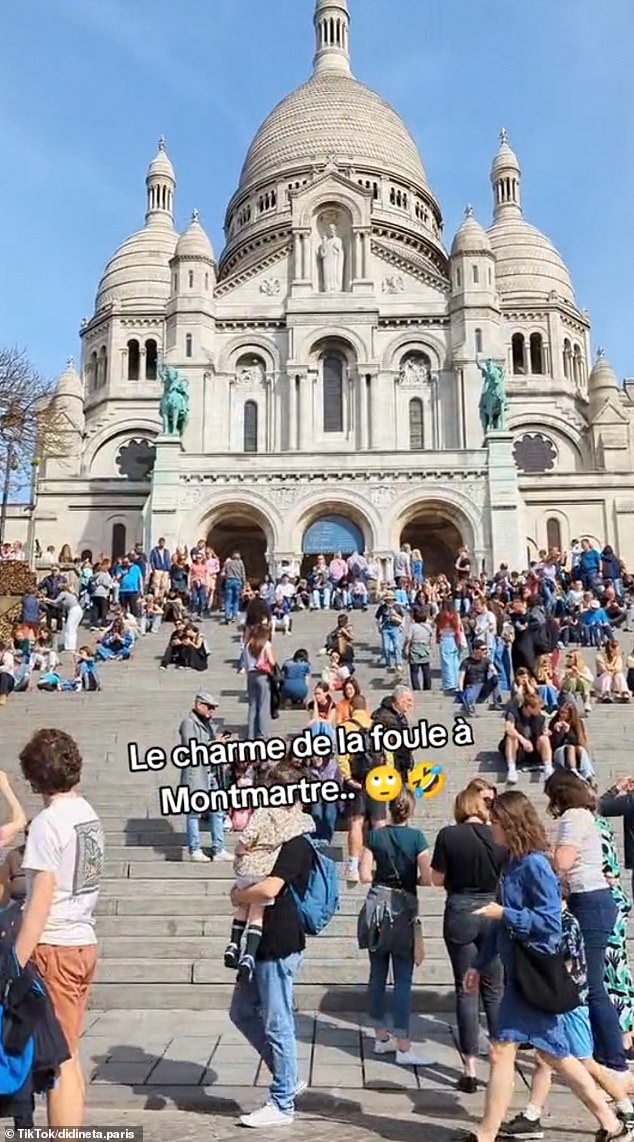
Some 11 million tourists visited the Sacré-Coeur Basilica (pictured) in Montmartre last year
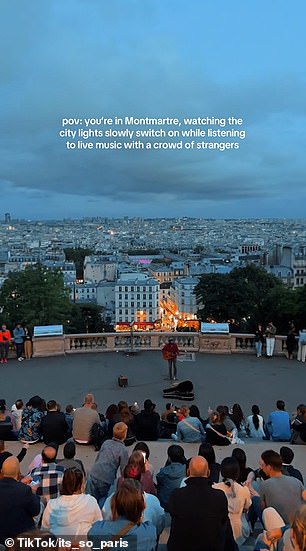
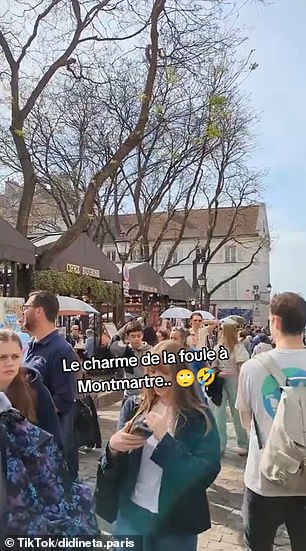
Social media influencer types often romanticise Montmartre, showing off its charm which encourages many to visit

Montmartre offers sweeping views over Paris, where tourists often gather on the steps to look at
Adding to the anger is the recent introduction of new traffic restrictions, that many fear could drive small businesses out.
Families are also leaving in their droves, driven away by rocketing house prices and tourist rentals. Between 20 and 30 per cent of properties are Airbnb listings, according to estate agents.
Locals have also hit out at gas-guzzling tourist sidecars and Citroen 2CVs racing down cobbled streets.
In recent months, fed-up residents have voiced their frustration by unfurling banners with messages in their windows.
They included ‘Forgotten residents’, Let the Montmartrois live’ and ‘Behind these facades there are people’.












